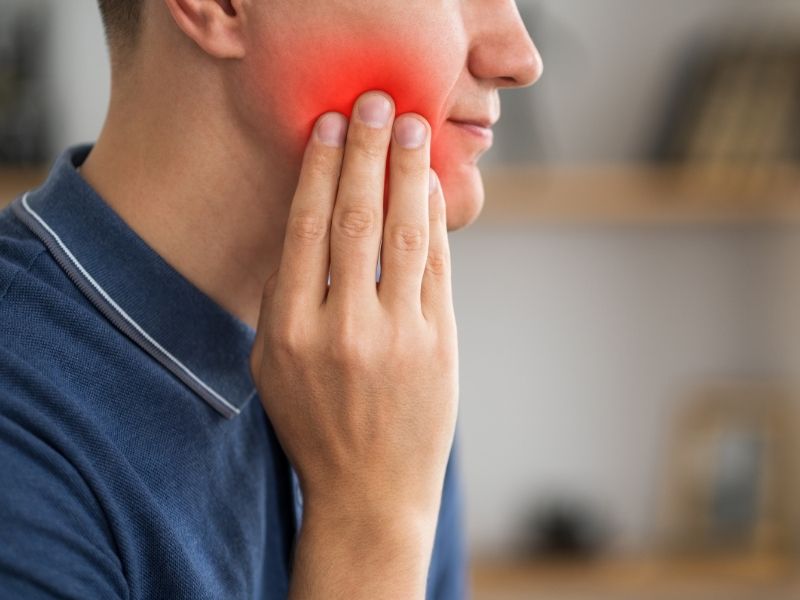Jaw Pain and the Facts About TMJ Disorders

Most people don’t give much thought to their jaw until something goes wrong. It’s only when chewing becomes uncomfortable, or when a dull ache creeps in near the ears, that we realize how much we rely on this small but complicated joint. That joint, known as the temporomandibular joint or TMJ, is what allows us to talk, bite into an apple, laugh, yawn, and sing without a second thought. When it stops working properly, life gets more complicated. Problems with this joint are often called temporomandibular disorders, or TMD, and they can range from a mild annoyance to a daily struggle.
Unlike a sprained ankle or a chipped tooth, TMD doesn’t always have one simple cause. It can sneak up slowly or arrive suddenly, leaving people puzzled about why their jaw feels sore or why it clicks whenever they eat. Some people notice it first thing in the morning after a night of clenching their teeth, while others find it flares up during stressful weeks. Whatever the trigger, the experience is surprisingly common, though it often goes undiagnosed for months or even years.
Why Do TMJ Problems Happen?
There isn’t a single explanation for why TMD develops, which makes it a little frustrating to pin down. Grinding teeth at night, also known as bruxism, is one of the biggest culprits. The pressure that builds up when clenching for hours while asleep is far greater than what the joint is designed to handle. Over time, the muscles become sore and the joint itself starts to feel strained.
Injuries can also spark problems. A sudden jolt from a car accident, a sports injury, or even opening the mouth too wide in one moment of bad luck can set things off. Arthritis is another possibility, wearing down the cushioning cartilage in the joint just as it does in knees or hips. Stress, meanwhile, plays a quiet but powerful role. Most of us clench our jaws when we’re tense without realizing it, and that constant pressure eventually adds up. On top of all that, bite alignment matters too—if teeth don’t meet properly, the jaw may shift and strain with every chew.
How It Feels to Live with TMD
The way TMD shows up varies a lot, which is part of the reason it’s confusing for patients. For some, it starts with a faint popping noise when opening wide. Others feel tenderness along the sides of the face that turns into headaches by the end of the day. A few notice their ears aching, only to learn later that nothing is wrong with their ears at all—it’s the jaw sending pain in that direction. In the more stubborn cases, the jaw can feel stuck or refuse to open all the way, which is not only uncomfortable but also alarming.
These symptoms have a way of spilling into everyday life. A person might avoid chewy bread or crunchy snacks because it hurts too much to eat them. Long conversations may leave the jaw throbbing. Even sleep can be disrupted, especially for people who clench and grind without realizing it. When all of these small frustrations pile up, the impact on quality of life becomes obvious.
What to Expect at the Dentist
When jaw pain or stiffness becomes more than an occasional nuisance, most people turn to their dentist first. That visit usually begins with a conversation. Your dentist will want to know when you first noticed the discomfort, whether you grind your teeth at night, and if certain habits or stressful situations make things worse. After that, a hands-on exam is common. The dentist may feel along the sides of your face and jaw, check how smoothly the joint moves when you open and close, and listen for clicks or popping sounds. If something seems unusual or more serious, imaging such as X-rays or an MRI can give a clearer picture of what’s going on inside the joint.
The goal of this process isn’t just to spot jaw pain, but to rule out other issues that can look very similar. Ear infections, sinus problems, and even certain dental conditions can all mimic TMD. Sorting through those possibilities allows the dentist to confirm whether the jaw joint is really to blame. Once that’s established, treatment can be designed around your specific needs instead of just masking the pain.
Finding Relief
Most people are relieved to learn that treating TMD rarely means surgery. In fact, the majority of cases improve with simple, conservative steps. Something as basic as applying heat to relax sore muscles or using a cold pack to ease swelling can make a noticeable difference. During flare-ups, many patients find it helps to stick with softer foods and give their jaw a break from gum or anything too chewy. If grinding or clenching is part of the problem, a custom night guard can protect the teeth and take pressure off the joint while you sleep.
Medication sometimes plays a supporting role. Over-the-counter anti-inflammatories may reduce soreness, and in more stubborn cases a dentist can prescribe short-term muscle relaxants. Physical therapy is another option; simple stretches and strengthening exercises can improve movement and reduce stiffness. Managing stress often matters just as much as any medical approach. Learning to relax the jaw, practicing mindfulness, or even noticing when you’re clenching during the day can go a long way toward breaking the cycle. Surgery is a last resort, used only when other methods don’t provide relief.
Looking Ahead
TMD can feel discouraging at first because it tends to come and go. One day the jaw feels fine, the next it aches with every bite. That unpredictability often makes people worry it will never improve. The reality, though, is that most patients do get better with time and proper care. It usually takes some patience and a willingness to adjust daily habits, but the outlook is generally good.
If you’ve been living with jaw pain, frequent headaches, or a popping sound every time you chew, it may be time to schedule an evaluation with us. A thoughtful exam can reveal whether the TMJ is at the heart of the problem and open the door to treatment that actually addresses the cause. The temporomandibular joint may be small, but when it works the way it should, it makes everyday life—meals, conversations, even a wide yawn—comfortable again.
